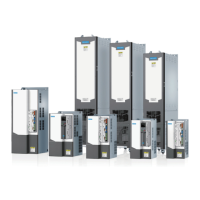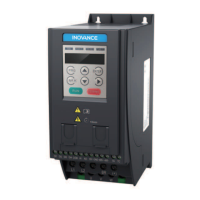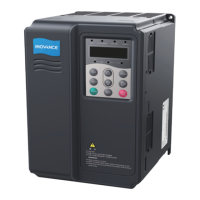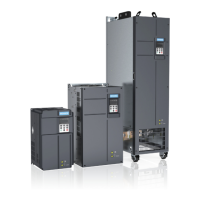Function Applications
-491-
which may result in too strong noise or mechanical stress. Setting the acceleration and deceleration
time properly in torque control mode can ensure smooth change of the motor speed. The torque
acceleration/deceleration time corresponds to the time required for the torque to increase from 0 to
the value defined by A0-03.
However, do not set the torque acceleration/deceleration time in scenarios in which the startup
torque is small. For scenarios where rapid torque response is required, set the torque acceleration/
deceleration time to 0.00s.
For example, two motors are rigidly connected to drive the same load. To ensure balanced load
distribution, set one AC drive as the master in speed control and the other as the slave in torque
control. The slave receives the master's output torque as the torque command and must follow the
master rapidly. In this case, the acceleration/deceleration time of the slave in torque control is set to
0.00s.
Table 4–30 Speed limit/speed limit offset
Item
Operation Conditions
Operation command
Forward RUN Forward RUN Forward RUN Forward RUN
Torque reference
direction
+ - - +
Speed limit direction
+ - + -
Normal running
direction
Forward RUN
Reverse RUN
Forward RUN
Reverse RUN
Uni-directional
speed limit offset
(A0-11 = 1)
Bidirectional speed
limit offset
(A0-11 = 0)
Application
4.4.9 Current Loop
Current loop PI parameters for vector control are divided into low-speed and high-speed groups. These
parameters can be automatically obtained through auto-tuning on all parameters of asynchronous
motor and generally do not need to be modified.
The dimension of the current loop integral regulator is integral gain rather than integral time. A large
current loop PI gain may result in oscillation of the entire control loop. In the case of severe current
oscillation or torque fluctuation, manually reduce the PI proportional gain or integral gain.

